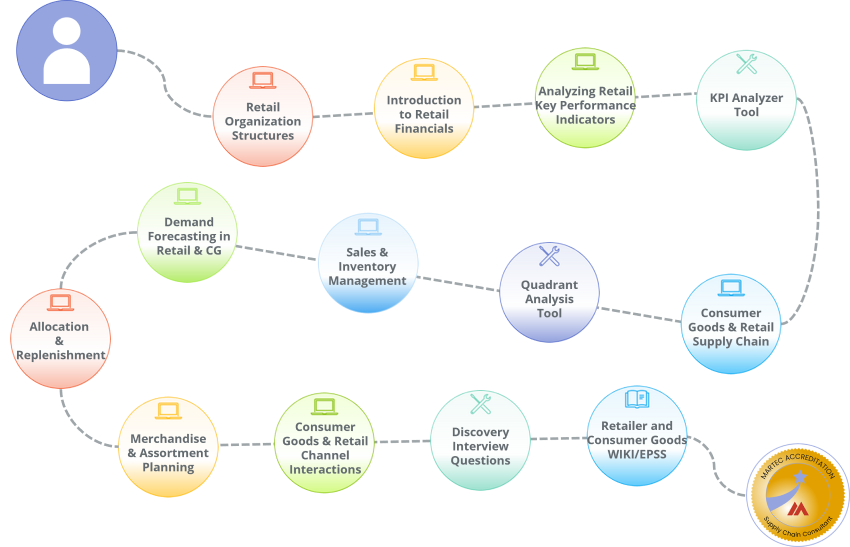Supply Chain Consultant
Retail Consultant - Supply Chain Learning Path
This learning path is for consultants, project managers and business analysts who work on implementation projects for clients and need a deeper knowledge of supply chain processes. It assumes that learners have completed the retail induction learning path or have equivalent knowledge from past projects.
Select any of the circles along the path to find out more about each step.

The Skills You Gain
By studying this learning path, consultants will gain these skills:
- Explain typical organization structures, identify the functional departments and their key executive roles, and their common pain points.
- Interview executives and managers to identify operational challenges and potential performance improvements.
- Analyze retail financial statements to identify potential ways to grow sales, increase achieved gross margins, reduce expenses, optimize inventory to achieve service level targets and improve cash flow.
- Analyze a wide range of retail KPIs to recognize where performance is better or worse than industry norms and identify performance improvements.
- Map and analyze a company’s total supply chain to identify dependencies and interactions with other entities, and identify ways to improve total supply chain performance.
- Carry out quadrant analysis to identify areas where IT systems improvements will improve overall company performance.
- Analyze sales and inventory performance to identify potential improvements in managing and growing sales, improving achieved gross margins and optimizing inventory levels.
- Identify the improvement potential in demand forecasting, lost sales avoidance and potential improvements to allocation and replenishment processes, and merchandise and assortment planning.
- Quantify business cases for improvement projects.
